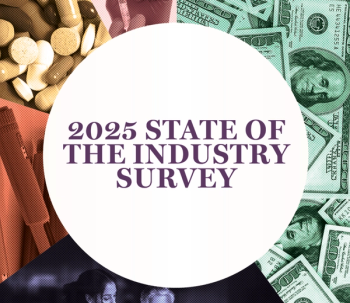
- Managed Healthcare Executive June 2019 Issue
- Volume 29
- Issue 6
Seven Pharmacy Regulations Health Execs Must Watch
These are the important policies to watch out for in 2019.
Health system executives are finding it difficult to stay ahead of the multiple trends culminating at once-reimbursement pressures, rising drug costs, regulatory complexity (340B), and the central role of pharmacy in value-based care.
Ed Francis, a senior director of life sciences at
“Congress and the executive branch have discussed everything from eliminating the system entirely to writing laws that increase pricing transparency,” he says. “Even without government intervention there has been movement with some new PBMs that offer rebates as 100% pass-through to consumer. Other companies have emerged that are offering online drug price comparisons in a local area. All of this will help to solve the problem.”
Here are five other policies to keep an eye on in the year ahead.
1. USP 800
Pharmacy expert Ernie Gates, president of
USP 800 is about protecting the healthcare worker, patient, and environment from accidental exposure to hazardous drugs and requires changes to standard operating procedures across an organization, beginning with receipt of a hazardous drug and ending with disposal.
“Many pharmacies, including those inside of institutions such as hospitals, are not prepared to comply with USP 800, which goes into effect later this year,” he says. “This could be problematic for any healthcare organization that is dependent upon pharmacies, including health plans that operate or simply reimburse pharmacies.”
2. Drug Supply Chain Security Act (DSCSA)
The
Related article:
“We are now starting to see enforcement actions in the form of fines,” she says. “One large wholesale distributor was the FDA’s first ever warning letter for non-compliance. They also need to be preparing to comply with the new aspects of this regulation that take effect in 2020.”
By 2020, all Rx products covered under DSCSA must be serialized, and all transactions can only involve serialized product.
3. The Lowest Price Act
“The act was implemented to increase price transparency for consumers covered under Medicare or Medicare Advantage,” he says. “Health system pharmacists can help patients find better pricing by advising that there are options available to them.”
4. EPA update of the Resource Conservation and Recovery Act (RCRA) standards
These
“The good news is that there will be improved alignment to DEA requirements for disposal and the change in requirements may impact an organization’s waste generation classification which could result in lower costs,” says Joyce Thomas, associate principle, pharmacy advisory services for
5. CMS Hospital Outpatient Prospective Payment Proposed Rule CY 2019 (OPPS)
Romig explains this
Related article:
“The proposed rule also includes a request for information related to a potential Competitive Acquisition Program for Part B drugs and biologics, which would run through the Center for Medicare and Medicaid Innovation,” he says.
6. Provider status changes
Expanding the scope of practice for pharmacists is being considered in state legislatures and in Congress. This is particularly true in states with large underserved areas.
“In Congress, a main consideration is whether Medicare should cover payments to pharmacists in these underserved areas,” Romig says. “More than half of the 100 total members in the U.S. Senate have signed on to support the
The bill would provide for Medicare coverage and payment for certain pharmacist services that are furnished by a pharmacist in a health-professional shortage area, and that would otherwise be covered under Medicare if furnished by a physician. On the state level, many are considering allowing pharmacists to prescribe oral contraceptives, while others would allow them to prescribe treatments for flu or strep throat. Virginia is considering allowing pharmacists to perform opioid abuse counseling. Pennsylvania is discussing allowing pharmacists to counsel for tobacco cessation.
Keith Loria is an award-winning journalist who has been writing for major newspapers and magazines for close to 20 years.
Articles in this issue
over 6 years ago
Eight Ways to Help Patients Navigate Healthcare Costsover 6 years ago
Cut Through the Cloud Vendor Clutterover 6 years ago
Seven Pharmacy Questions to Consider for 2020 and Beyondover 6 years ago
Featured Exec Joan Budden: President and CEO at Priority Healthover 6 years ago
What You Need to Know About the Vaccine Pipelineover 6 years ago
Managed Care Pharmacy Survey 2019over 6 years ago
Hospital Pharmacist Role Expands in Patient CareNewsletter
Get the latest industry news, event updates, and more from Managed healthcare Executive.






















































